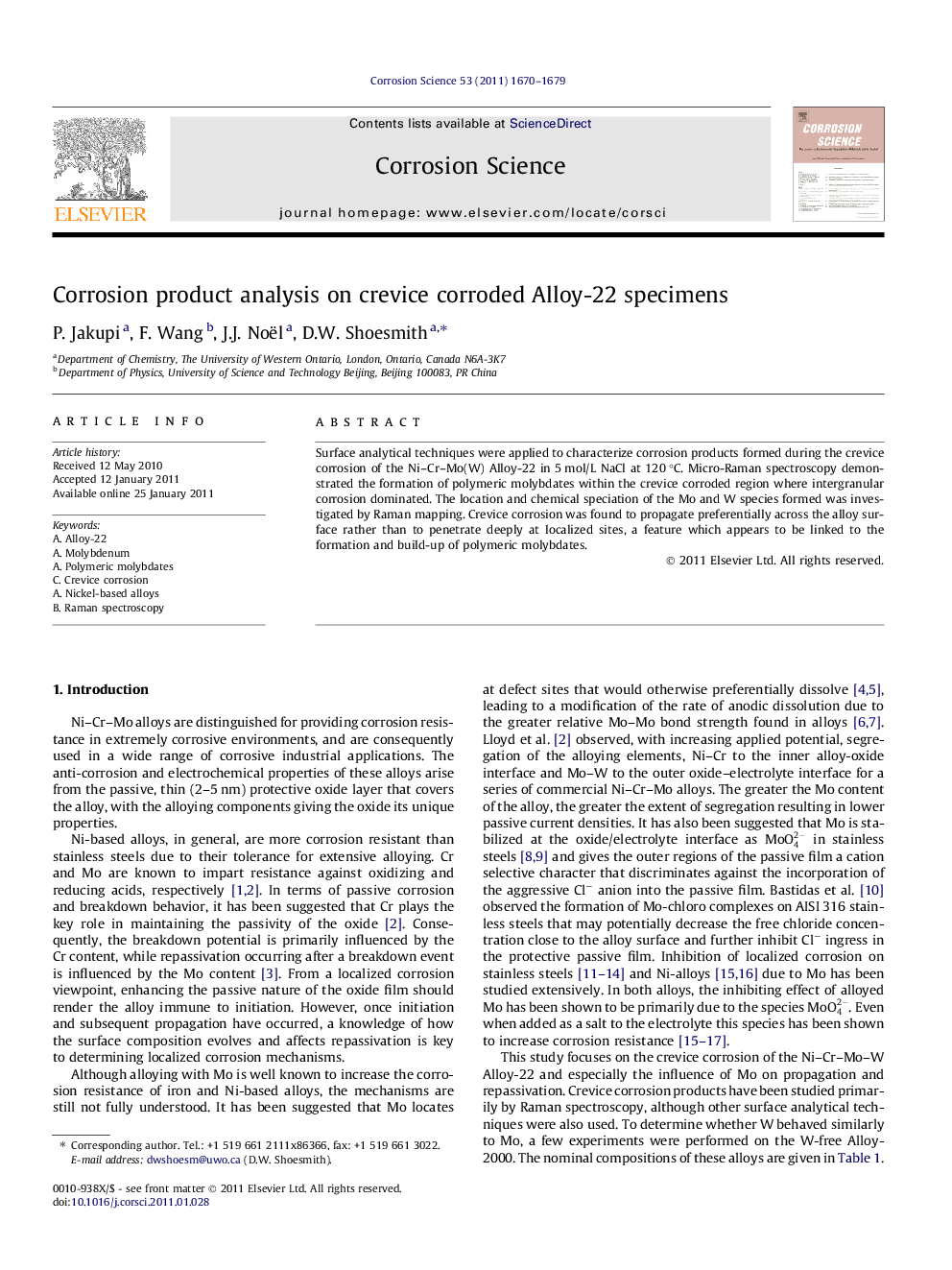| Article ID | Journal | Published Year | Pages | File Type |
|---|---|---|---|---|
| 1470332 | Corrosion Science | 2011 | 10 Pages |
Surface analytical techniques were applied to characterize corrosion products formed during the crevice corrosion of the Ni–Cr–Mo(W) Alloy-22 in 5 mol/L NaCl at 120 °C. Micro-Raman spectroscopy demonstrated the formation of polymeric molybdates within the crevice corroded region where intergranular corrosion dominated. The location and chemical speciation of the Mo and W species formed was investigated by Raman mapping. Crevice corrosion was found to propagate preferentially across the alloy surface rather than to penetrate deeply at localized sites, a feature which appears to be linked to the formation and build-up of polymeric molybdates.
Research highlights► Crevice corrosion products on Alloy-22 were identified by micro-Raman spectroscopy. ► Polymeric molybdates, formed at low pH conditions, accumulated at damaged regions. ► Polymeric molybdates are proposed to inhibit crevice propagation.
